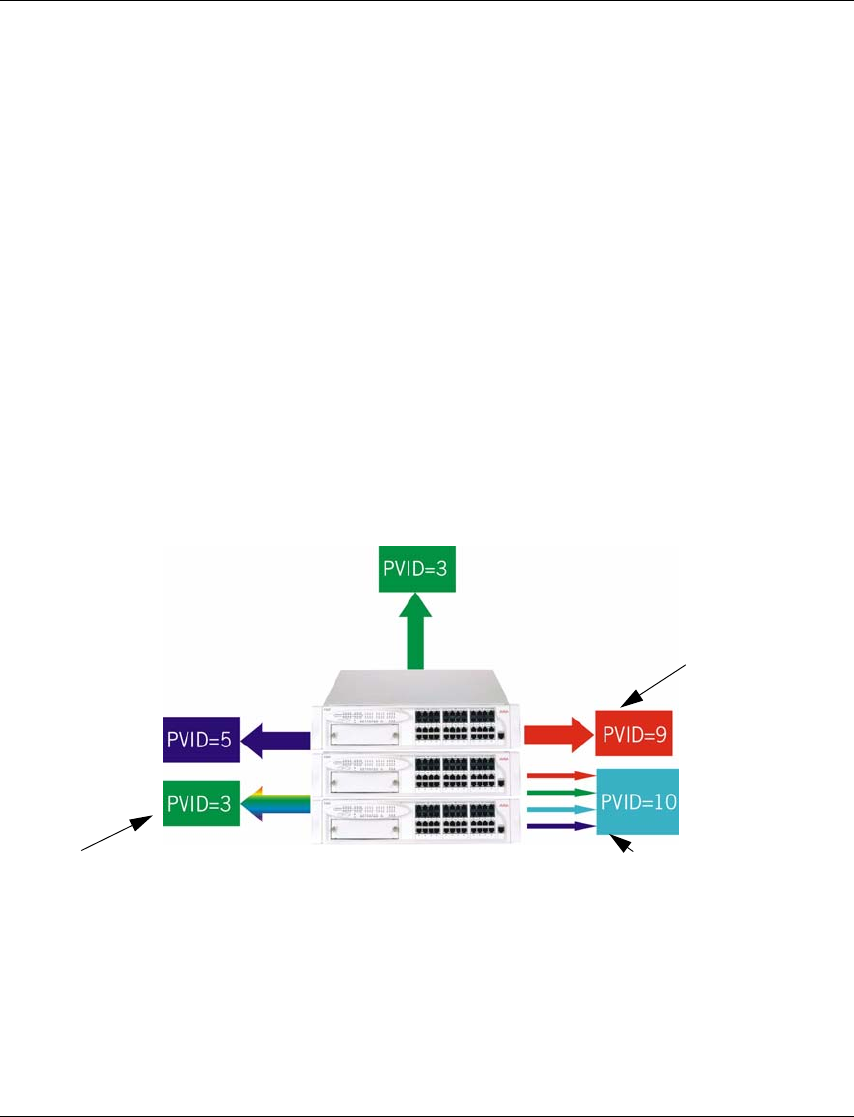
Chapter 11 Avaya P330 Layer 2 Features
Avaya P334T-ML User’s Guide 85
privacy, but the whole building has a shared high-speed connection to the ISP.
In order to accomplish this, P330 allows you to set multiple VLANs per port. The
three available Port Multi-VLAN binding modes are:
• Bind to All - the port is programmed to support the entire 3K VLANs range.
Traffic from any VLAN is forwarded through a port defined as “Bind to All”.
This is intended mainly for easy backbone link configuration
• Bind to Configured - the port supports all the VLANs configured in the
switch/stack. These may be either Port VLAN IDs (PVID) or VLANs that were
manually added to the switch.
• Statically Bound - the port supports VLANs manually configured on it.
L VLAN Binding — The forwarding mechanism of the P330-ML switches is
based on frame’s VLAN and MAC address. If a frame is destined to a known
MAC address but arrives on a different VLAN than the VLAN on which this
MAC address was learnt, this frame will be flooded as unknown to all ports that
are bound to its VLAN. Hence, VLAN binding should be executed with care,
especially on ports connected to workstations or servers.
Figure 11.3 illustrates these binding modes in P330.
Figure 11.3 Multiple VLAN Per-port Binding Modes
Static Binding
- The user manually
specifies the
list of VLAN IDs to be
bound to the
port, up to 253 VLANs
- Default mode for every
Bind to Configured
- The VLAN table of the
port will
support all the Static
VLAN
entries and all the ports’
VLAN
IDs (PVIDs) present in
the switch
Bind to All
- Any VLAN in the range
of 1-4094
will be allowed access
through this


















